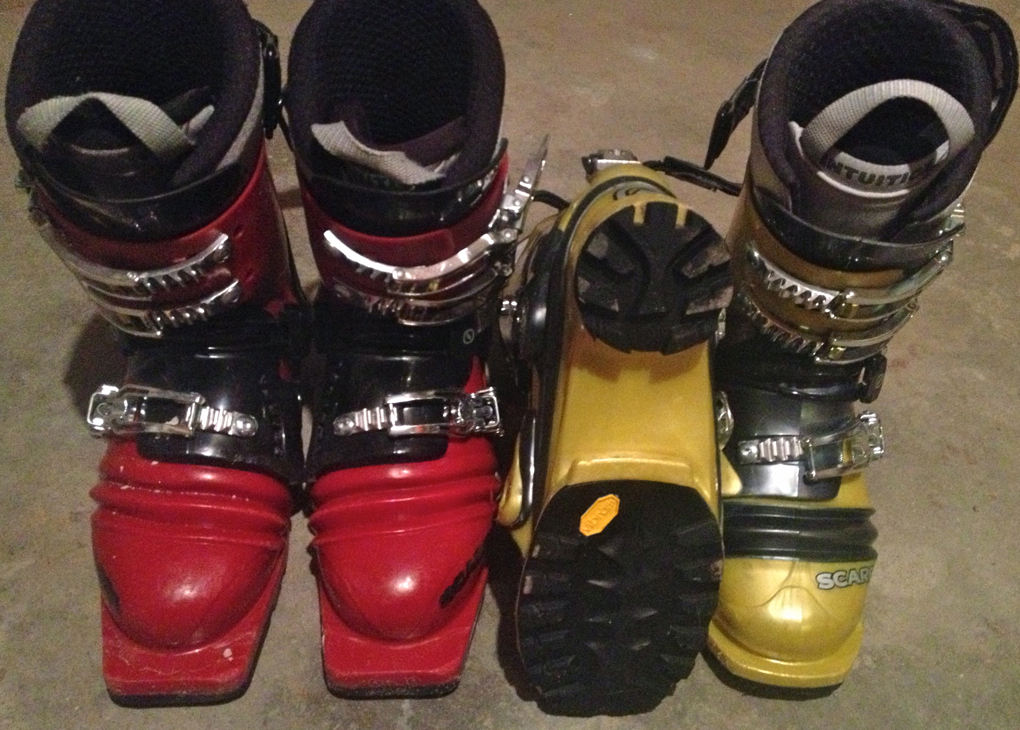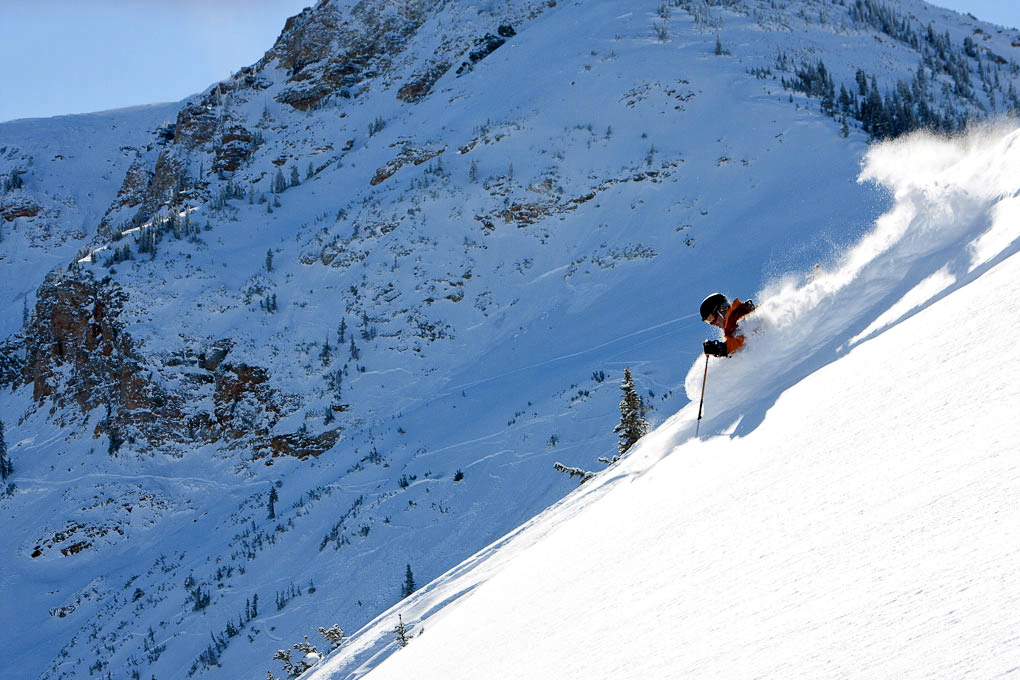For any telemark skier who is debating whether or not to make the jump to the NTN binding, the boot is an important part of your decision, and the options on the market are limited. In this two-part review, I’m going to first discuss NTN boots in general, then will follow up with a review of one of them: the Scarpa Tx Comp.
From the three reviews that we’ve already posted of the NTN binding (including my own review of the original NTN Freeride, and Kate Hourihan’s and Paul Forward’s reviews of the NTN Freedom binding) you already know that we think it is excellent. I’ll go so far as to say that the NTN concept is to telemark what parabolic ski design was to skiing. It is very, very smart.
But, what are you committing to if you make the switch?
If you are seriously thinking of investing in an NTN setup, you need to know the difference between an NTN boot and a traditional-style, 75mm tele boot. The difference is very simple: NTN has a Reversed Duck Bill. Let me explain.
NTN REVERSED DUCK BILL
Similar to a traditional 75 mm binding, the NTN binding employs a cable, but it doesn’t secure at the heel. Instead, it runs through a clamp/cartridge system that grabs the boot at the ball of the foot. This design creates a releasable binding, a very cool feature for those of us who tend to hang out in avalanche country.
In order for the binding to clamp, the duck bill is removed from toe of the boot and placed under the ball of the foot, creating a reversed duck bill.

The clamp system of the NTN binding requires powerful and forceful movement in the sideways plane to release. Any twisting motion that would normally translate to twisting legs and limbs forces the binding to release. (For more on this read Paul Forward’s NTN Freedom review.)
So the conversation I have been having over the past few years with tele skiers about NTN verses the 75 mm always ends with a version of this statement: I love the idea of the NTN binding, but I hate that I have to buy new boots. This is a problem, one that discourages a fair amount of teleskiers from making the jump.
I’ve been able to put in a fair amount of time over the last three years on both styles of boots. In fact, I’ve put in 300 days each on the Scarpa TXComp (NTN) and the Scarpa T-Race (75 mm). And in part 2, we’ll publish a comparison review of these two boots.
But first, to do this conversation justice, let’s start by stating a few common concerns and then briefly address what boots are actually available to the prospective NTN convert.
The most common concern: Will I have to get a new pair of boots? Yes you will, no way around it.
However, NTN boots are still telemark boots: they have bellows, and for the most part, they are tour friendly. The only difference is the duck bill is now reversed (as explained above) and they tend to be lighter.
It is also worth a mention that Scarpa is now making a version of all of their NTN boots with Dynafit inserts. The only caveat here is that reviewer Paul Forward found that they functioned pretty poorly in this regard, with a sloppy fit, weird flex in the bellows, and the need for a special “puck” so that the boots don’t prerelease from the bellows’ flex.
There are a handful of 3 and 4 buckle boot options on the market today for less aggressive skiers made by Scarpa, Garmont, and Crispi. But currently there are only two choices for an aggressive, 4 buckle, NTN boot: the Scarpa Tx Comp (and its Dynafit compatible version, the Tx Pro) and the Crispi EVO.
I haven’t ridden the EVO enough to talk about it, but I’ve got over 300 days in the Tx Comp.

From the little I know about the EVO, it is a higher cuff boot that comes up over the top part of the calf, and it has a lower price point. The EVO is the only competitor on the market for the Tx Comp. Basically, we need to get in a Crispi boot in order to answer the EVO vs. the Tx Comp question for you, which may be one of the most important questions aggressive tele skiers are asking besides, Why hasn’t Black Diamond entered the NTN boot market yet?
While Crispi has been updating their design, Scarpa has come to a standstill. They haven’t changed the Tx Comp since 2011-12 and the T-Race since before 2009-10. The fact that they haven’t improved the boots for a few years doesn’t mean that they are perfect, at least not in this reviewer’s experience. Are they good? Absolutely. But just because we choose the telemark turn over the alpine turn doesn’t mean that our boot technology should fall behind. (Uh, vacuum fitting, hint hint…) Especially when the boot is the major concern that seems to hold the tele population back from making the jump to the NTN binding.
As things stand right now we’ve got only a few choices, and in part 2, we’ll bang out the details on one of them – the Scarpa Tx Comp – and discuss how it stacks up against the 75mm Scarpa T-Race.
